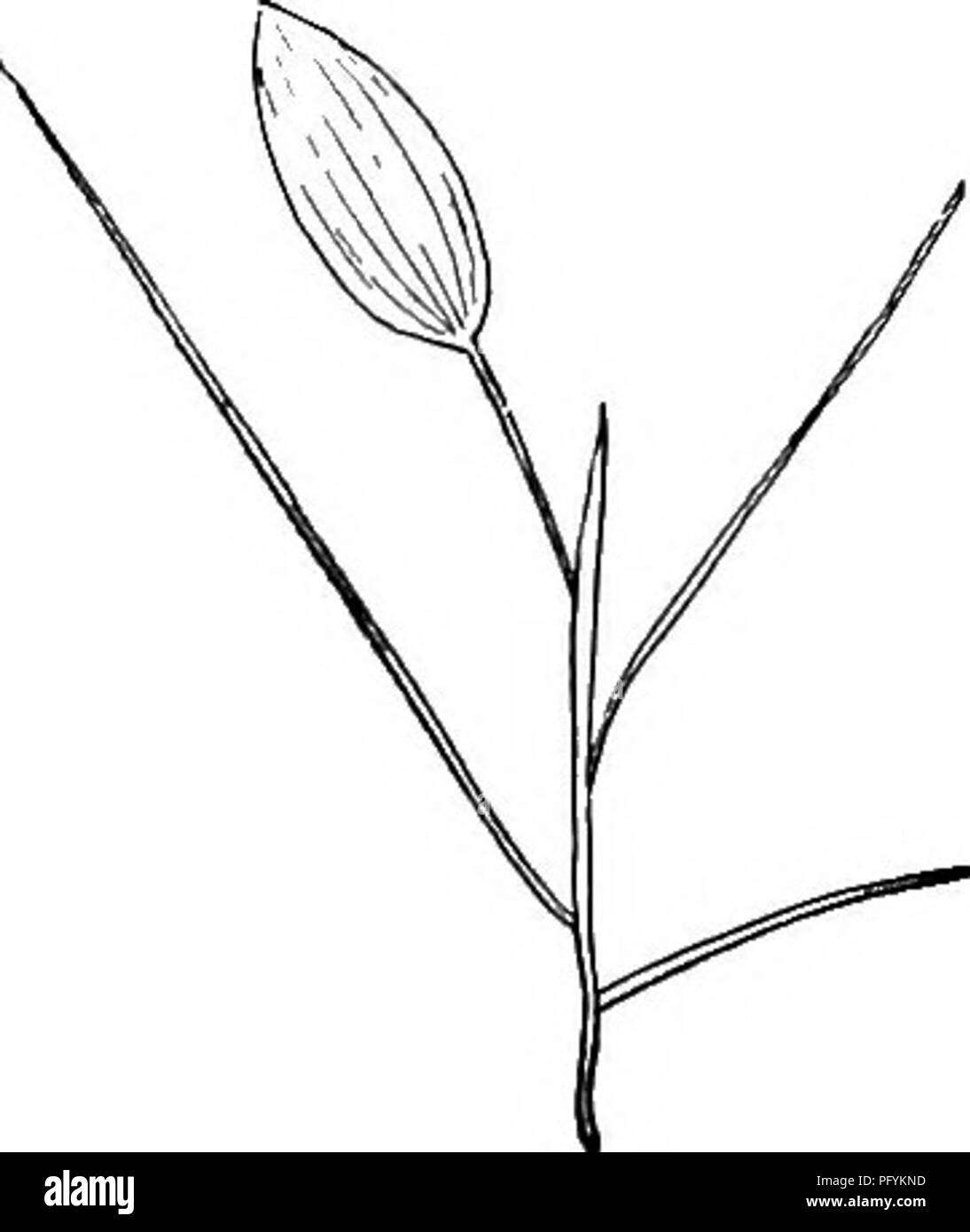. Fresh-water biology. Freshwater biology. l82 FRESH-WATER BIOLOGY. Fig. 255. Potamogelon natans. One floating leaf and three submerged leaves, representing the thread-like form of the monocotyledonous type of sub- merged leaf. (After Gobel.) thread-like leaves are very common and may be the only kind occur- ring on the plant, as in Potamogeton pectinatus, or they may occur on the same plant together with floating leaves, as in Potamogeton natans (Fig. 255). It is to be noticed that most of the monocoty- ledons conform to some one of the types mentioned, while the dicotyledons seem to favor an

Image details
Contributor:
Central Historic Books / Alamy Stock PhotoImage ID:
PFYKNDFile size:
7.2 MB (114.4 KB Compressed download)Releases:
Model - no | Property - noDo I need a release?Dimensions:
1451 x 1723 px | 24.6 x 29.2 cm | 9.7 x 11.5 inches | 150dpiMore information:
This image is a public domain image, which means either that copyright has expired in the image or the copyright holder has waived their copyright. Alamy charges you a fee for access to the high resolution copy of the image.
This image could have imperfections as it’s either historical or reportage.
. Fresh-water biology. Freshwater biology. l82 FRESH-WATER BIOLOGY. Fig. 255. Potamogelon natans. One floating leaf and three submerged leaves, representing the thread-like form of the monocotyledonous type of sub- merged leaf. (After Gobel.) thread-like leaves are very common and may be the only kind occur- ring on the plant, as in Potamogeton pectinatus, or they may occur on the same plant together with floating leaves, as in Potamogeton natans (Fig. 255). It is to be noticed that most of the monocoty- ledons conform to some one of the types mentioned, while the dicotyledons seem to favor another habit, such as is seen in the finely dissected leaves oiRanunculus aquatilis, Myriophyllum spicatum, Bidens beckii (Fig. 256), and Ceratophyllum. Among the dicoty- ledons in which both floating and submerged leaves are present, as in Ra- nunculus and Cahomha (Fig. 257), the tendency to finely dissected leaves is conspicuous, while in the monocot- yledons, having both floating and submerged leaves on the same plant, the latter tend to assume the ribbon-like or the long linear outline, as in Fig. 255. Some of the true water plants, as Bidens beckii and Myriophyllum spi- catum, support a vertical portion of the main stem con- siderably above the '''g„i, 4?^'frS water surface and EmerL^ilea^'™: on this emersed portion ordinary aerial leaves are borne. It is some- times possible in the case of such plants to find leaves which seem to be midway in form between the finely cut submerged leaves and the bladed emersed ones, so it seems probable that the submerged leaves are to be regarded as exposed leaves which have changed in form because life under water requires such modification. Such a modification has been produced experimentally. Some plants in. Please note that these images are extracted from scanned page images that may have been digitally enhanced for readability - coloration and appearance of these illustrations may not perfectly resemble the original work.. Ward, He